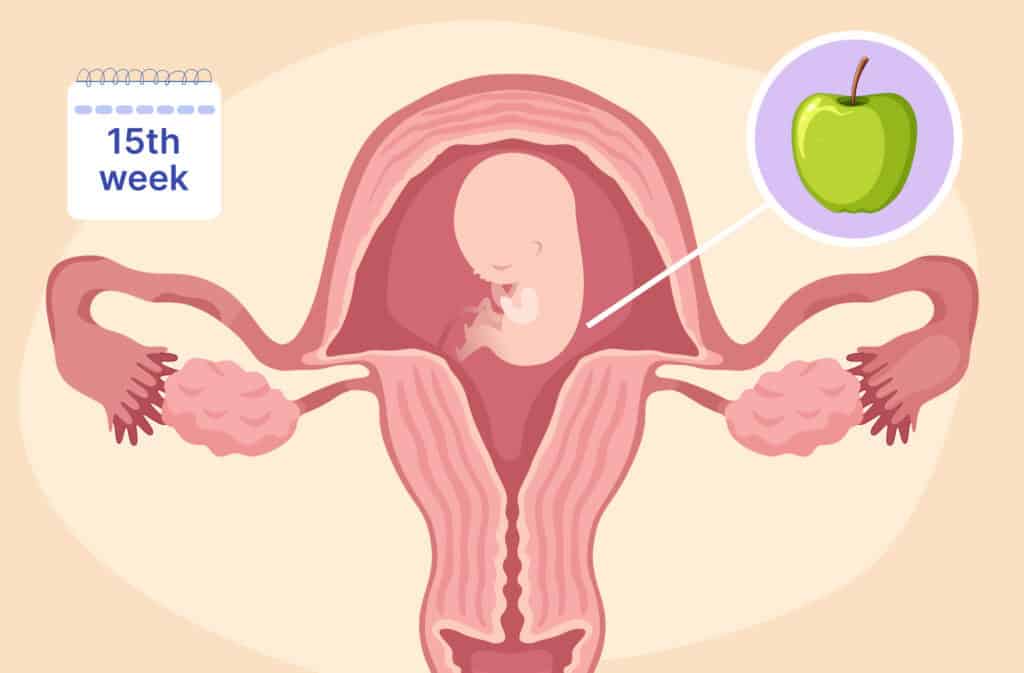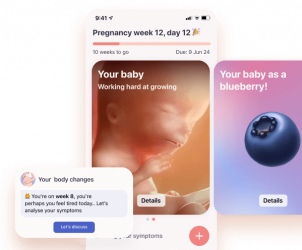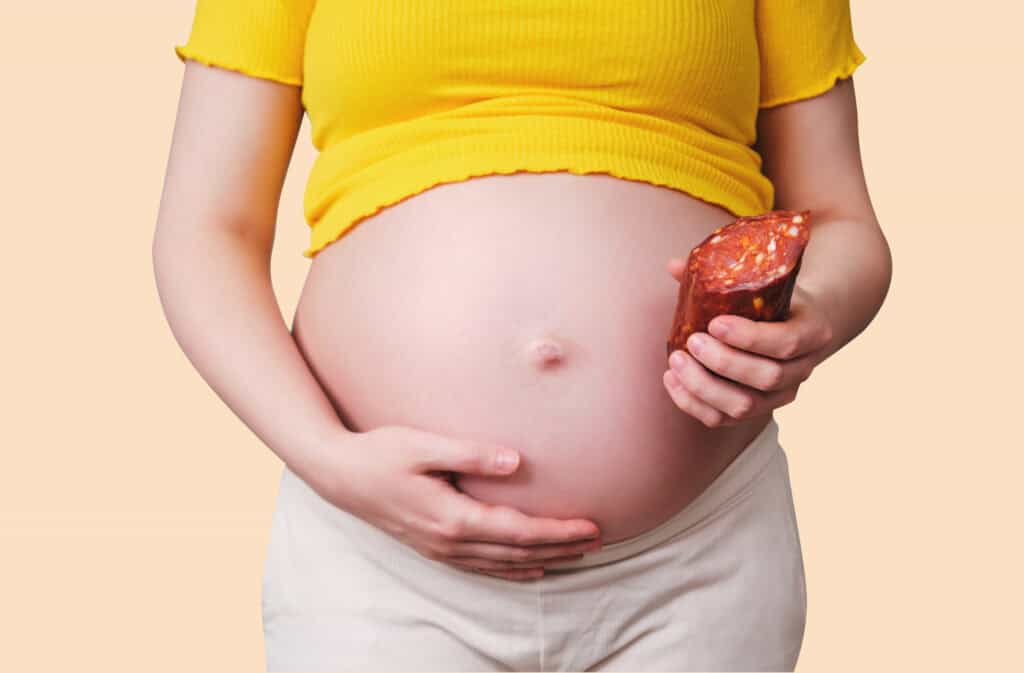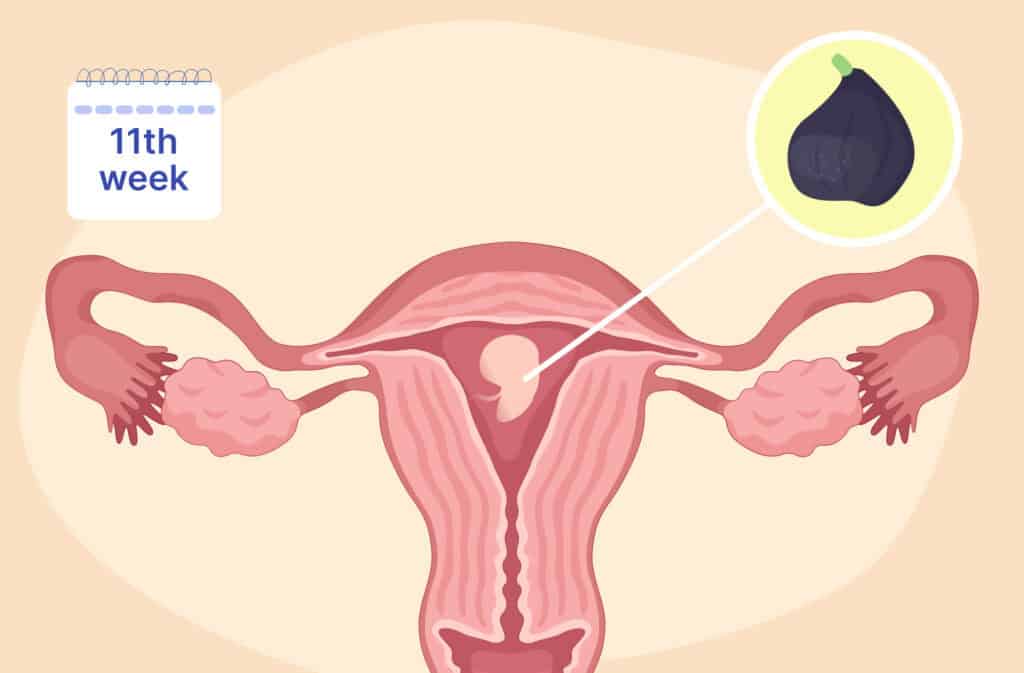Femia > Health Library > Pregnancy > Pregnancy week by week > 15 weeks pregnant: Baby’s growth, bump progress, and what to expect
15 weeks pregnant: Baby’s growth, bump progress, and what to expect

- Updated Feb 27, 2025
- Published
CRAFTED BY HUMAN
Crafted by human At Femia, we provide accurate and up-to-date information at every stage of your journey, from trying to conceive, pregnancy and postnatal support. All content is created by a real person based on in-depth research and own professional experience. Femia ensures that you will receive expert advice, strict accuracy and a personalized approach from our authors/medical experts. Learn more about our editorial policy.
FACT CHECKED
Fact checked At Femia Health, we maintain the highest standards of editorial excellence in delivering content focused on helping you conceive, guiding you through pregnancy, and supporting you postpartum. Explore our content review principles to learn how we ensure the accuracy and quality of our health and lifestyle tips for every stage of your journey.
At 15 weeks pregnant, your baby’s muscles and bones are strengthening, and they’re becoming more active. You may notice increased energy, a small bump, and new symptoms like mild backaches as your body adapts.
Welcome to 15 weeks pregnant, where you’re well into your second trimester, and baby growth is accelerating! Many moms-to-be experience a renewed sense of energy during this phase, with early symptoms like nausea often subsiding. Let’s explore what’s happening with your baby and body this week, along with tips to support your well-being.

Pregnancy symptoms at 15 weeks
As you settle into the second trimester, some symptoms may shift, while others continue or emerge. Here are common symptoms at 15 weeks:
Nasal congestion
It’s common to experience a stuffy nose during pregnancy, often due to hormonal changes and increased blood flow to the mucous membranes, a condition called rhinitis of pregnancy. To alleviate congestion, try using a humidifier at night, propping up your head with extra pillows while sleeping, and drinking plenty of fluids. Saline nasal spray can also help, but always consult your healthcare provider before using any decongestants or medications.
Nosebleeds
Pregnancy can cause nosebleeds in about 20% of women, as increased blood volume leads to expanded blood vessels in the nose. While these are generally harmless, if you experience frequent or heavy nosebleeds that don’t stop after applying pressure for 30 minutes, contact your provider or seek immediate medical attention.
Heartburn
Heartburn, or acid reflux, is a common pregnancy symptom, especially after eating or when lying down. It’s caused by physical and hormonal changes, including the relaxation of the muscles between your stomach and esophagus. To reduce discomfort, try smaller meals, avoid spicy or fatty foods, and consider sleeping propped up to alleviate the burning sensation.
Swollen gums
Pregnancy gingivitis, characterized by swollen, red, and tender gums, affects about half of expectant mothers due to hormonal shifts. It’s important to maintain good oral hygiene by brushing gently, flossing daily, and visiting the dentist regularly for checkups and cleanings. If you notice persistent swelling or discomfort, consult your dentist and inform them of your pregnancy.
Pregnancy weight gain
By week 15, most women are past the nausea and food aversions of the first trimester and may notice an increase in appetite. For those starting pregnancy at a healthy weight, a steady weight gain of about a pound per week is typical. To support healthy weight gain, aim for nutrient-dense snacks and meals to meet your daily caloric needs.
👉Find out more: 14 weeks pregnant: Baby’s size, bump beginnings, and self-care tips
Your body at 15 weeks pregnant
At week 15, your uterus is growing and shifting upwards, which may cause your abdomen to feel firmer as the baby begins to make its presence known with a small, visible bump. Hormonal changes that caused early pregnancy symptoms like nausea and fatigue are starting to stabilize, which often leads to a decrease in these discomforts. However, as your body adapts to the growing uterus, you might start to notice mild backaches or stretching sensations due to the ligaments that support the uterus stretching and adjusting.
Your growing belly may also bring about changes in how you feel day-to-day. While your energy levels may start to improve as the second trimester progresses, the physical changes can lead to some discomfort. It’s essential to listen to your body and give yourself rest when needed. Gentle exercise, like walking or swimming, combined with proper hydration and a balanced diet, can help ease common aches and support your body as it continues to grow and change during pregnancy.
15-week pregnant belly
At 15 weeks, many women notice a visible bump, especially if they’re petite or have had previous pregnancies. The uterus is now moving upward, which may make your lower abdomen feel fuller and firmer. Each bump looks unique, so embrace the changes as they come.

Baby development at 15 weeks pregnancy
At 15 weeks, your baby’s skeletal system is developing rapidly, with bones hardening and muscles strengthening. The baby is making more movements, practicing essential reflexes, and even experimenting with facial expressions.
Sense of taste
By week 15, your baby is starting to develop taste buds, and the nerves connecting them to the brain are forming. While your baby won’t actually “taste” the food you eat yet, the flavors from your meals pass into the amniotic fluid through your bloodstream. As your baby’s taste buds mature around 20 weeks, they may be able to detect some flavors, but there’s no need to worry about them disliking your dinner just yet.
Baby movement
Your baby is becoming more active as their legs grow longer than their arms, and they can move all of their joints and limbs. Although your little one is constantly moving, you won’t be able to feel those movements just yet. It’s an exciting time as your baby’s strength and coordination continue to develop..
Your baby’s face
Your baby’s face is becoming more recognizable, with well-formed eyelids, eyebrows, eyelashes, nails, and hair. Inside your womb, your baby is already practicing movements like sucking their thumb, yawning, stretching, and making faces, creating the adorable features you’ll soon be able to see after birth.
15-week baby size
The 15-week fetus size is about 4 inches long, similar to the size of an apple, and weighs around 2.5 ounces. This week marks a growth spurt, with increased muscle development that will allow for more movement.
15-week ultrasound
A 15-week ultrasound can provide a detailed view of your baby’s limbs, head, and even facial features as they become more distinct. During a 15-week ultrasound 3D scan, you may catch a glimpse of your baby’s hands, fingers, and possibly even thumb-sucking. The baby is more active, though you may not feel the movements just yet.
Real-life 15-week fetus
A real-life 15-week fetus has more developed limbs, hands, and feet, with tiny fingers and toes visible on an ultrasound. Facial features are becoming more defined, and the baby’s movements are increasing as they stretch, flex, and experiment with reflexes.
15 weeks pregnant: Tests to expect
- Amniocentesis (optional). Amniocentesis is a diagnostic test done between 15–20 weeks to assess the baby’s health and detect genetic or chromosomal conditions. A small sample of amniotic fluid is taken under ultrasound guidance. It provides definitive results with over 99% accuracy but with a small risk of complications, including miscarriage (about 0.1–0.3%).
- Maternal blood tests. Routine blood tests at this stage help monitor maternal health as blood volume increases and the baby’s demands grow.
- Complete blood count (CBC): Checks for anemia, common in the second trimester due to increased blood volume.
- Infection screening: Tests for infections like hepatitis B and C, HIV, syphilis, and, if indicated, a TORCH panel for conditions like toxoplasmosis and rubella.
- Blood type and Rh factor: Identifies Rh incompatibility, with Rho(D) immune globulin (RhIg) given if needed.
Ensures the mother’s health is managed, identifies infections or conditions that could affect the pregnancy, and allows early intervention if needed.
👉Find out more:
Reaching week 16: Baby’s development, your changing belly, and health tips
Health tips and self-care at 15 weeks pregnant
- Focus on a balanced diet. At 15 weeks pregnant, your body requires more nutrients to support your growing baby. Make sure you’re eating a balanced diet with plenty of lean proteins, whole grains, fruits, and vegetables. These will provide essential vitamins and minerals, including folic acid, calcium, and iron, to support both your health and your baby’s development.
- Stay hydrated. Hydration is more important than ever during pregnancy. Drinking enough water can help you maintain energy levels, reduce swelling, and ease common pregnancy discomforts like constipation and heartburn. Aim for at least 8-10 glasses of water per day, and add hydrating foods like fruits and vegetables to your diet for an extra boost.
- Get moving with gentle exercise. Gentle, low-impact exercises such as walking, swimming, or prenatal yoga are great for staying active during pregnancy. Regular exercise helps boost circulation, relieve stress, and improve your overall mood. It can also alleviate back pain and keep your body strong and flexible for labor and delivery. Always check with your healthcare provider before starting any new exercise routine to ensure it’s safe for you.
- Take care of your teeth. Swollen gums and bleeding when brushing are common during pregnancy due to pregnancy gingivitis. Make sure to brush your teeth gently twice a day, floss regularly, and visit your dentist for routine checkups. Good oral hygiene helps prevent dental issues that can arise during pregnancy and ensures a healthy mouth for both you and your baby.
Questions from the Femia community
How to deal with sleep issues in pregnancy?
Establish a calming bedtime routine, avoid caffeine in the late afternoon, and use pillows for support to make side-sleeping more comfortable.
Are there foods I should avoid at 15 weeks?
Continue avoiding raw fish, high-mercury seafood, unpasteurized dairy, deli meats, and undercooked meats to reduce health risks.
Why do I have nasal congestion during pregnancy?
Increased blood flow to mucous membranes during pregnancy can lead to mild congestion or “pregnancy rhinitis.” Staying hydrated and using a humidifier can help.
The bottom line
At 15 weeks pregnant, your baby is growing quickly, with movements increasing as muscles and bones strengthen. You may feel more energetic and begin to notice a baby bump, while new symptoms like backaches or nasal congestion may arise. Using a pregnancy-tracking app can help you monitor your progress and symptoms. Focusing on gentle exercise, hydration, and a balanced diet will support both you and your growing baby.
References
- “15 Weeks Pregnant: Symptoms, Baby Development & Tips.” BabyCenter, www.babycenter.com/pregnancy/week-by-week/15-weeks-pregnant.
- “Week 15 of Pregnancy: Symptoms, Baby Development & More.” What to Expect, www.whattoexpect.com/pregnancy/week-by-week/week-15.aspx.
- “15 Weeks Pregnant: Baby Development, Symptoms & Tips.” NHS, www.nhs.uk/pregnancy/week-by-week/1-to-12/15-weeks/.
- “Pregnancy Week 15: What to Expect.” American Pregnancy Association, www.americanpregnancy.org/healthy-pregnancy/week-by-week/15-weeks-pregnant/.
- Mayo Clinic. “Amniocentesis.” Mayo Clinic, Mayo Foundation for Medical Education and Research, 26 Aug. 2023, www.mayoclinic.org/tests-procedures/amniocentesis/about/pac-20392914. Accessed 19 Nov. 2024.

If you are wondering why can’t pregnant women eat deli meat, we have all the answers. Learn everything you should know about listeriosis, the risks, and how to stay safe.

Wondering if you can eat blue cheese while pregnant? Learn when blue cheese is safe, how to check for pasteurization, and guidelines for enjoying it during pregnancy.

Learn what’s happening at 11 weeks pregnant, from baby’s growth to your changing body. Explore tips for managing symptoms and supporting fetal development.

